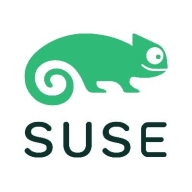

Lacework FortiCNAPP and SUSE Rancher compete in cloud security and container management. SUSE Rancher seems to have the upper hand due to its robustness and comprehensive feature set.
Features: Lacework FortiCNAPP offers efficient anomaly detection, strong integration capabilities, and powerful security tools. SUSE Rancher stands out with its container management strengths, multi-cluster orchestration, and extensive Kubernetes support.
Ease of Deployment and Customer Service: Lacework FortiCNAPP features a streamlined deployment process alongside strong customer support. SUSE Rancher has a more complex deployment model due to its comprehensive capabilities but compensates with responsive customer service. SUSE Rancher requires more initial setup effort but excels in management and orchestration.
Pricing and ROI: Lacework FortiCNAPP provides attractive pricing options and a good return on investment with its competitive cost structure. SUSE Rancher, while incurring higher setup costs, offers solid ROI through its extensive feature set that justifies the investment. Lacework is cost-effective, but SUSE Rancher’s advanced features offer long-term value.
| Product | Market Share (%) |
|---|---|
| Lacework FortiCNAPP | 1.8% |
| SUSE Rancher | 0.4% |
| Other | 97.8% |


| Company Size | Count |
|---|---|
| Small Business | 4 |
| Midsize Enterprise | 4 |
| Large Enterprise | 3 |
Lacework FortiCNAPP provides robust cloud security, combining vulnerability management and multi-cloud insight with user-friendly controls, machine learning detection, and compliance support.
Lacework FortiCNAPP specializes in cloud security by merging machine learning anomaly detection with agent-based vulnerability management to offer detailed alerts and compliance reports. Its comprehensive approach allows continuous monitoring across AWS and Kubernetes, providing insights from an attacker's perspective. The platform offers automation and seamless Slack integration, facilitating collaborative and efficient cloud security management. Users value its ability to handle multi-cloud environments and scan IAC scripts, configurations, and compute nodes across AWS and GCP.
What are the key features?Organizations across sectors leverage Lacework FortiCNAPP for cloud security, focusing on compliance, security posture, and vulnerability management. It is widely used for monitoring AWS and Kubernetes environments, scanning IAC scripts, configurations, and securing compute nodes. It supports multi-cloud security posture management and log ingestion, enabling companies to maintain strong cloud infrastructures without dedicated security layers.
SUSE Rancher manages and deploys Kubernetes clusters, simplifies container orchestration, and enhances DevOps practices, supporting multi-cloud environments and facilitating application scalability and monitoring.
SUSE Rancher provides robust Kubernetes cluster management and seamless integration with different tools and platforms, making it valuable for complex cloud infrastructures. It aids in automating workflows, ensuring consistent application performance across environments, and enhancing security with reliable RBAC. It simplifies operations with automated updates and comprehensive monitoring tools, supporting multiple Kubernetes distributions. SUSE Rancher offers centralized management of clusters with an intuitive experience, though it may benefit from better stability, performance optimizations, and improved documentation clarity.
What are the important features?SUSE Rancher is implemented in various industries where managing Kubernetes clusters and ensuring application scalability are critical. It supports complex cloud infrastructures, automating workflows, and integrating seamlessly with different tools, enhancing overall operational efficiency and security. In industries needing consistent performance and centralized management, SUSE Rancher proves to be an invaluable tool.
We monitor all Container Security reviews to prevent fraudulent reviews and keep review quality high. We do not post reviews by company employees or direct competitors. We validate each review for authenticity via cross-reference with LinkedIn, and personal follow-up with the reviewer when necessary.